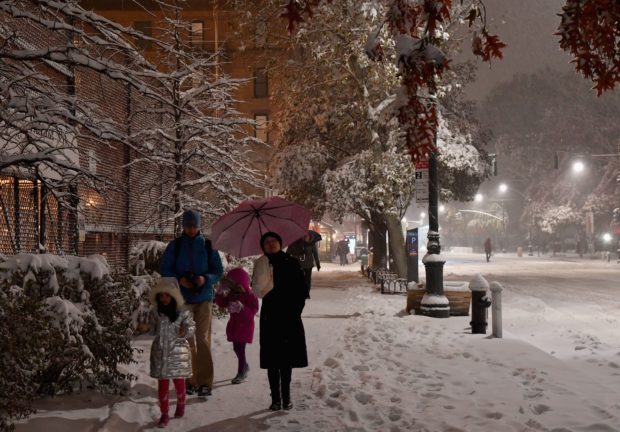
Forming out of an extratropical cyclone near the Northwest, the storm system dived into the northern portions of the United States, dropping light to moderate snow across the Great Lakes, Upper Midwest on March 11–12 before reaching the Ohio Valley the next day. The March 2017 North American blizzard was a major late-season blizzard that affected the Northeastern United States, New England and Canada, dumping up to 3 feet (36 in 91 cm) of snow in the hardest hit areas, mainly New York, Vermont, New Hampshire and Southern Quebec. And they were doing the same thing this morning.” _Īssociated Press reporters Alina Hartounian in Phoenix, John Wawrow in Buffalo and Ed White in Detroit contributed to this report.Part of the 2016–17 North American winterġ Most severe tornado damage see Enhanced Fujita scaleĢ Time from first tornado to last tornado “And down there, my friends are like, `Here’s the hubbub,′ sending me photos. “I was driving back and forth to work to Niagara County scratching my head, like, `What’s all the big hubbub about?′” he said of the 2014 event. “I was just thrilled I didn’t have to walk.”įriday’s snow also reminded Bruce Leader of the 2014 storm, dubbed “Snow-vember,” which, like this week’s storm, also left some parts of the region buried while others saw just a few inches.

“I just kind of gunned it down the street in my little SUV,” said Murphy, who lives about a mile from the Buffalo hospital. The memory made both especially glad she was able to drive to work Friday, despite roughly 2 feet of snow. Registered nurse Mary Ann Murphy recalled trudging on foot to Mercy Hospital, husband Steve at her side, in the 2014 storm. That epic storm dumped 7 feet (2 meters) of snow on some communities over three days, collapsing roofs and trapping motorists in more than 100 vehicles on a lakeside stretch of the New York State Thruway. “Roads still icy, slushy, we must slow down,” police said on Twitter.īuffalo has experience with dramatic lake-effect snowstorms, few worse than the one that struck in November of 2014. In southwestern Michigan, state police reported a 20- to 25-vehicle pileup on U.S. Parts of Pennsylvania also were seeing accumulations of lake-effect snow.įort Drum, New York, near Lake Ontario, saw 42 inches, the National Weather Service reported Friday. Heavy snow accumulations were also reported in northern New York on the eastern edge of Lake Ontario, and in parts of northern Michigan. “We’ve made sure our supplies are stocked - food and things for our patients as well as associates.” Some associates are spending the night,” spokeswoman JoAnn Cavanaugh said. “Our staff has really stepped up, and people have been making every effort to get in where they can. “And as a result, we were able to salt, we were able to clear the roads better than we would’ve if they had been filled with traffic, and we really avoided a large number of accidents.”Ĭatholic Health, which operates several health care facilities in the storm zone, has been preparing for days. “I am so proud of Western New Yorkers for heeding our call to stay off the roads last night it was treacherous,” Hochul told radio station WBEN. The declaration covers 11 counties, with all vehicles banned from a stretch of Interstate 90.

Kathy Hochul declared a state of emergency Thursday for parts of western New York, including communities along the eastern ends of Lake Erie and Lake Ontario. “I’m 68, and I’ve lived in this town probably 60 of the 68, and it always amazes me,” he said.

Buffalo resident David Munschauer was well aware of the wildly contrasting scenes as he walked around. Meanwhile, streets in downtown and north Buffalo had been cleared but were virtually empty of traffic Friday afternoon. The only thing you can see really is the house across the street,” he said. Scott Fleetwood of West Seneca captured video of lightning crashing outside his home throughout the night, as well as snow swiftly burying the pumpkins on his porch. The AAA passed along other drivers’ locations to police.Įven before the snow began falling, the NFL announced it would relocate the Buffalo Bills’ Sunday home game against the Cleveland Browns from the team’s stadium in Orchard Park to Detroit.Ī day later the Bills tweeted photos of Highmark Stadium showing the playing field and its more than 60,000 seats virtually buried in snow, and forecasters warned of an additional foot or more by Sunday. In some cases, tow trucks followed behind payloaders enlisted to clear the way.

#New york city snowfall totals drivers
A lot of our tow truck drivers kept calling in saying that `police turned me away,’” she said. “The AAA crews were trying to get to people that had called in saying they were broken down or stranded or had gone off the road in their vehicle.


 0 kommentar(er)
0 kommentar(er)
